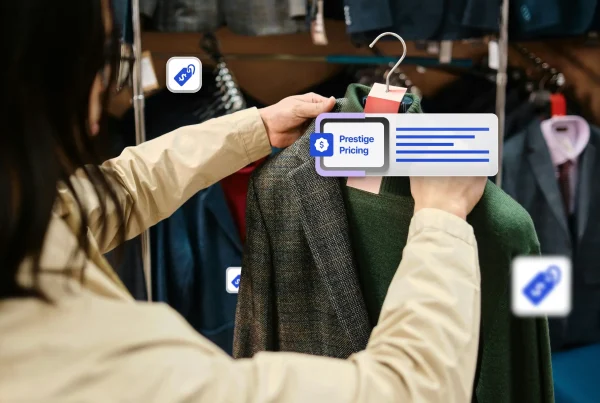During the last 18 months, consumer inflation accelerated in most developed and emerging economies. In the United States, the consumer price index (CPI) rose from 2.6% in March 2021 to 9.1% in June 2022, the fastest in 40 years, before showing a declining trend. In the European Union, consumer inflation reached 10% in September 2022, its highest-ever level and is expected to rise further. With the uptick in interest rates and as consumer buying power lessens, many retailers may begin seeing a pullback in demand, only to create a greater need to rigorously respond to inflation.
There’s no denying the current retail models are stressed and the challenges for retailers are bound to increase as consumers become highly price-conscious and adjust their shopping behavior. It is more important now than ever for retailers to find ways to overcome these challenges to survive. Today’s retail environment, with its inflationary pressures and post-COVID economic recovery, makes it imperative for brands to take into consideration many additional factors that could contribute to shopping behavior patterns – purchasing power, price elasticity, competitor pricing, and unemployment, to name a few! Pricing proactively can not only play a significant role in surviving the changing customer behavior, but can also enable retailers to prepare for any other external factors leading to an economic downturn.
Let’s take a look at six areas of focus to proactively price and win in the near term:
Get more mileage out of each promo dollar
Heading into what looks like a very intense promotional period, retailers must promote smarter and revisit category strategies to reflect shifts in consumer purchase behaviors and margin profiles. Evaluating which product categories will face the most inflationary pressures that are likely to yield significant changes in consumer behavior will help retailers make informed category-strategy decisions to turn this to their advantage.
Additionally, a comprehensive end-to-end lifecycle pricing solution can help retailers with their retail price optimization, promotion, and markdown optimization needs. They can carefully manage end-dates and store capacity, to create careful clearance patterns that extract the most revenue, sell through the most product, and preserve margin throughout, while keeping customers satisfied with the value they receive. Business strategies often require quick shifts with the changing business environment, such as focusing on sell-through in one instance, while at other times maximizing margin goals. Having a target-based pricing strategy can help retailers not only tackle inflation, but also other external factors that can affect sales.
Adopt new customer buying patterns to boost your Average Transaction Value (ATV)
Post-pandemic a change has been observed in the buying pattern of customers. Most retailers assume their baskets will shrink in tough economic times, but this does not have to be the case. Customers now prefer larger basket sizes to avoid frequent visits to the stores not only due to pandemic fears but also to save on increasing gas prices. Online traffic has increased multifold. These ever-changing buying patterns need to be taken into account to come up with a better pricing strategy which fits the changing economic environment. Retailers can leverage AI-powered demand forecasting for capturing buying patterns, trends, seasonality, and other unique demand drivers, all in one place.
Understand the price elasticity of your portfolio
Price elasticity is the key when it comes to increasing prices. For some products, it is very easy to increase the price without affecting the sales quantity, but this might not hold true for the entire portfolio. Sales for many products will decline if the price rises significantly as customers will switch to alternatives or turn to the competition. Therefore, It is extremely important to understand the nature of elasticity for products prior to finalizing the pricing strategy.
Inflation price calculator is a simple tool that helps in determining the ideal change in product price required to maintain the margins at the same level. It requires the following inputs:
- Product’s elasticity
- Current price of the product
- Cost of the product
- Average promotion % currently applied
- Inflation growth percentage
The calculator uses the above listed inputs to recommend a percentage change in price to maintain the same margins. This calculator is very helpful for retailers in deciding the price increase/ decrease by considering the most critical factors that can affect sales margin. For instance, if a highly elastic product that costs $5, is priced at $20 and sells at a 50% discount, reducing the price will be the ideal pricing strategy instead of increasing the price to maintain the same margins during rising inflation.
Inflation Pricing Calculator
Current MSRP ($)
Current COGS ($)
Elasticity
Make pricing work harder for your business
Retailers must focus on understanding their consumers, and identifying Key Value Items (KVIs), before making any pricing decisions. Best-in-class companies and brands rely on advanced retail analytics for pricing recommendations. Modern pricing tools examine customers’ willingness to pay, and the margin performance expected from the price change. Considering customers’ willingness to pay and product differentiation when making pricing decisions can help companies make more thoughtful pricing decisions in the present, as well as when we pass the current inflationary period.
And no matter what, even in what seem like intensely competitive times, retailers must avoid strict competitor-based pricing. Just because your competition does it, does not mean it is right for your business. Consumers are notoriously attentive to the pricing of certain products and categories. But in other cases retailers have the opportunity to price more freely; being aggressive where it matters, and backing off where it does not. It is also important to deploy smart communication strategies emphasizing product attributes that justify higher prices, such as superior quality, innovation, and exclusivity.
Go granular with pricing and promotion to deliver value to the customer
Implementing broad price increases in response to inflation is bad for both consumers and retailers and may erode customer trust. Rather, retailers should tailor their inflationary price response by customer and product segment, considering both margin performance and the consumers’ willingness to pay. Retailers that take a strategic and granular approach are more likely to emerge more profitable and with their consumer loyalty intact. What’s more, retailers should re-evaluate their price and promotion mix during this time and pull back on promotions, which can help manage cost increases without raising prices.
Additionally, retailers can be well prepared for any external shocks by leveraging data-driven analytics tools to track price changes, customer feedback, competitor moves, and other key metrics relevant to their business. An AI-powered test platform can empower retailers with rapid and easy test set-up, better statistical test and learn methodology, richer deep dives to understand outcomes, and most importantly better decisions and improved business performance.
Eliminate low-margin products that are not traffic drivers
As mentioned earlier, incorporating retail analytics solutions can help retailers easily track key metrics like gross profit margin on individual products. Despite how simple this may sound, many retailers do not have the end-to-end visibility into their business systems to accurately allocate costs to product-level P&Ls, blinding them to where they actually make money. By minimizing or altogether eliminating products with the lowest profit margins from their stock, especially those that are not effective traffic drivers, retailers can focus their time, energy and money on products that yield higher returns.
How can Impact Analytics help?
IA’s robust predictive analytics can take into account millions of data points across myriad variables such as seasonality, trends, inflationary pressures, price elasticity, supply chain challenges, customer demand patterns, and many more, to provide actionable insights around assortment, allocation, pricing, and overall financial planning. IA’s end-to-end lifecycle pricing solution leverages AI to drive decisions on initial, promotional, and clearance pricing to achieve your business objectives and ensure lifecycle pricing, promotions, pre-season pricing, and end-of-life markdown optimization. Combined with big data analytics and ML-based demand forecasts, we can provide a one-stop solution for all your pricing needs. The following infographic helps demonstrate the impact our clients are benefiting from PriceSmart, part of our integrated SmartSuite of products.
Click to enlarge
Whether you’re exploring specific opportunities like identifying your KVIs, optimally pricing your products during the holiday season, or in need of an end-to-end merchandising suite to drive profits across your retail value chain, Impact Analytics is here to help dynamically address your needs and evolve with your business strategy.
Reach out to us at [email protected] and schedule a time to hear more about how we can help your better anticipate, plan and execute in 2023.






